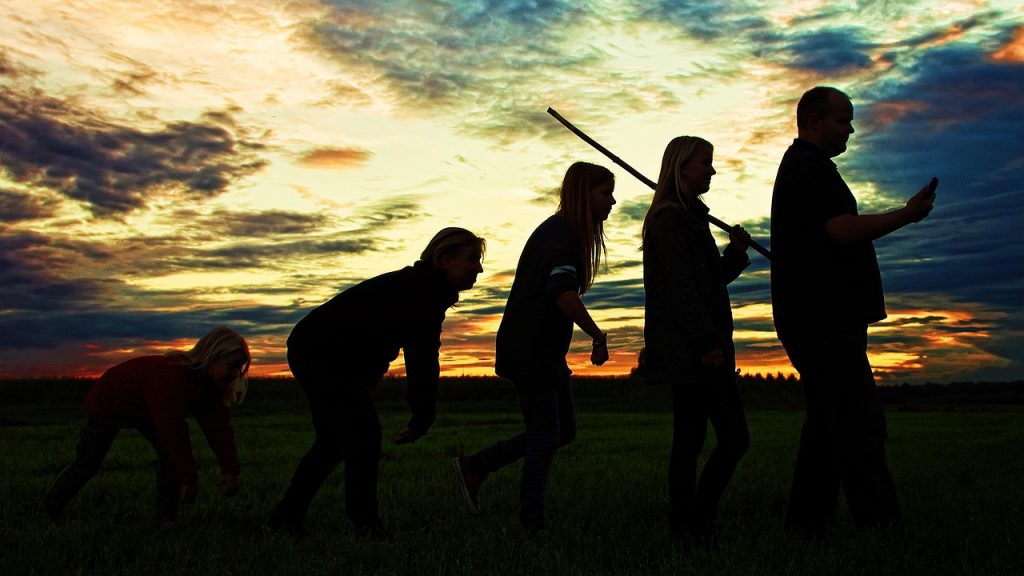Herd immunity would mean the end of the pandemic and corona restrictions. In a Brazilian city it could be reached already now, as researchers show. Nevertheless, the strategy is not worth copying there.
Manaus in Brazil could be the first city in the world to develop a kind of herd immunity against the corona virus. At least that is what a new international study published by researchers on the pre-print server medRxiv.org suggests. More than 30 epidemiologists, virologists and physicians have tested thousands of blood donations from the Brazilian cities of Manaus and Sao Paulo for their antibody content.
If they were able to detect antibodies against sars-CoV-2 in the blood, they interpreted this as a sign that the test persons had already had contact with the virus – and were immune to further infection, at least for a certain period of time.
66 percent infected = herd immunity?
The result for Manaus: About two thirds of the city’s inhabitants have already been infected – knowingly or unknowingly. This would correspond exactly to the percentage of people that scientists had already identified at the beginning of the pandemic as necessary to create a natural protective mechanism in the population so that the virus can no longer spread. In Manaus, this critical value could now be reached.
The development of the infection figures in the Brazilian metropolis with 1.8 million inhabitants would fit the bill: Unlike in Europe, there was no lockdown or other strict measures to prevent infections. President Bolsonaro played down the virus as a simple flu. As a result, the virus was more or less not contained by the state in Manaus – which resulted in immense casualty figures for the city: up to 100 people with corona infection per day died at the height of the pandemic in May.
The health care system reached its capacity limit due to the large number of infected people. Some hospitals had to store the bodies of the deceased in refrigerated containers in the meantime because the morticians could no longer keep up with their work, reports the “Daily Mail”. Photos show gigantic fields where the coffins of the Corona deceased are being buried en masse. Blue crosses mark the final resting place of the deceased.
Epidemiologist skeptical about transmissibility
In the meantime, however, the numbers have fallen sharply, unlike in the rest of Brazil, where the authorities are now taking much more restrictive action against the virus. Could this be the longed-for effect of herd immunity? Could be, but not necessarily, experts say.
“The number of test persons examined is very small compared to the population – and it is not a representative sample,” explains Gérard Krause from the Helmholtz Centre for Infection Research in Braunschweig, for example, to the “Süddeutsche Zeitung” newspaper. The results of the antibody study should therefore not be hastily transferred to other locations – although the two-thirds share of immune individuals could fit the picture.
What does herd immunity mean?
In science, herd immunity is generally referred to “when about 60 to 70 percent of the population is infected and immune,” explained virologist Ulf Dittmer from the University Hospital Essen in a recent FOCUS online interview. “Then the number of infections drops without any action having to be taken – because the R-value is always below 1,” this could just be the case in Manaus.
However, it is questionable how long this effect can last with sars-CoV-2. Virologists assume that an infection that has already occurred protects against further infection. However, it has not yet been conclusively clarified how long this will be the case.
High numbers of victims as a price for the possible herd immunity?
Either way, the interim success in terms of infection numbers is a highly controversial one. Helmholtz epidemiologist Krause: “Apart from the question of whether this effect is sustainable, it is important to evaluate at what social and health price it was purchased. After all, if many people become infected, this may be beneficial to herd immunity and reduce the number of infections in the long term. Until then, however, especially people with risk factors have an enormously high risk of becoming infected and falling seriously ill.
The corona death figures in Manaus are correspondingly high: the city of 1.8 million inhabitants has had more than 4,000 deaths since the beginning of the pandemic, all of whom have died with or as a result of corona. According to the authors of the study, this corresponds on average to about 1 death per 500 inhabitants.
The Corona death figures in Manaus are correspondingly high: the city of 1.8 million inhabitants has had more than 4,000 deaths since the beginning of the pandemic, all of whom have died with or as a result of Corona. According to the authors of the study, this corresponds on average to about 1 death per 500 inhabitants.
For comparison: In Munich, 224 people have died as a result of a corona virus infection in a similar number of inhabitants. With 1.5 million inhabitants, this means 1 corona death per 6700 inhabitants.
The fact that the number of victims is not even higher despite the lack of measures is probably due to the very young average age of the people in Manaus, epidemiologists also point out. Most of them are younger than 30 years old. As a rule, they fall ill with Covid-19 much less frequently than older people. In Germany, the national average age is 44 years. If the virus had spread here in a similar uncontrolled manner as in Manaus, the number of deaths would probably be significantly higher.
— Hector Pascua, Source: focus.de/gesundheit. Picture: stockilyapp.com
This post has already been read 1411 times!



